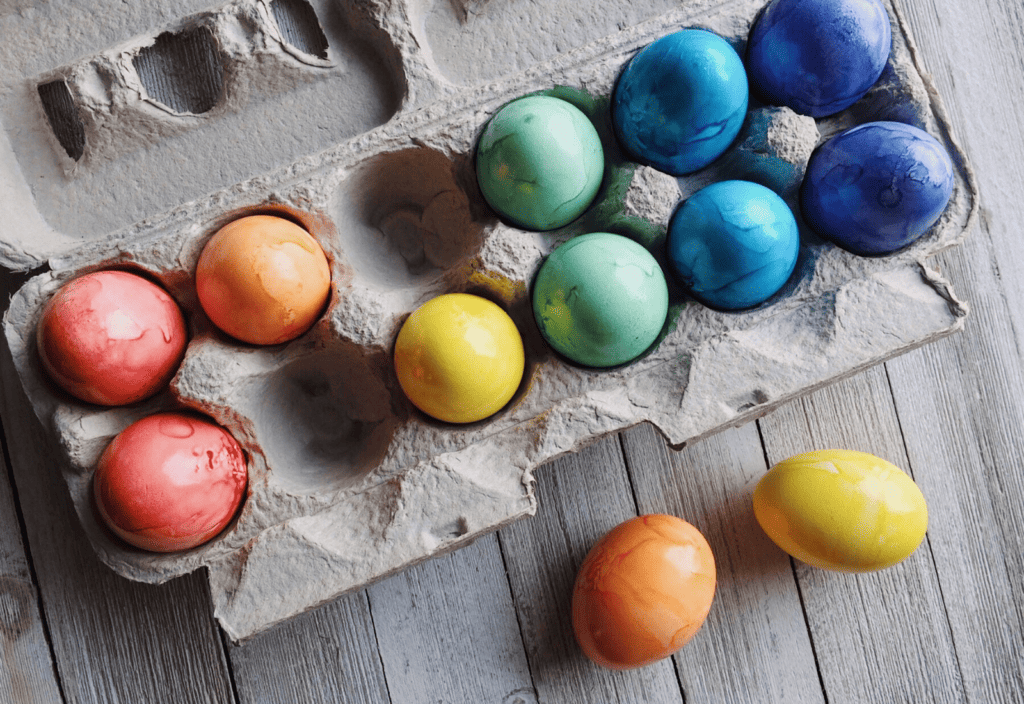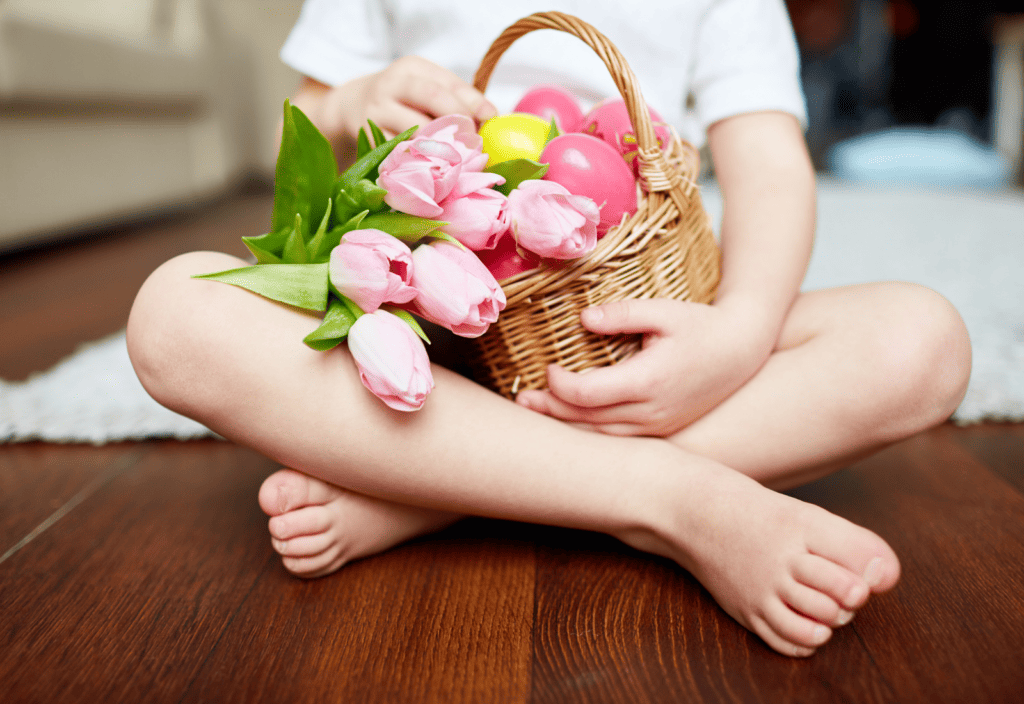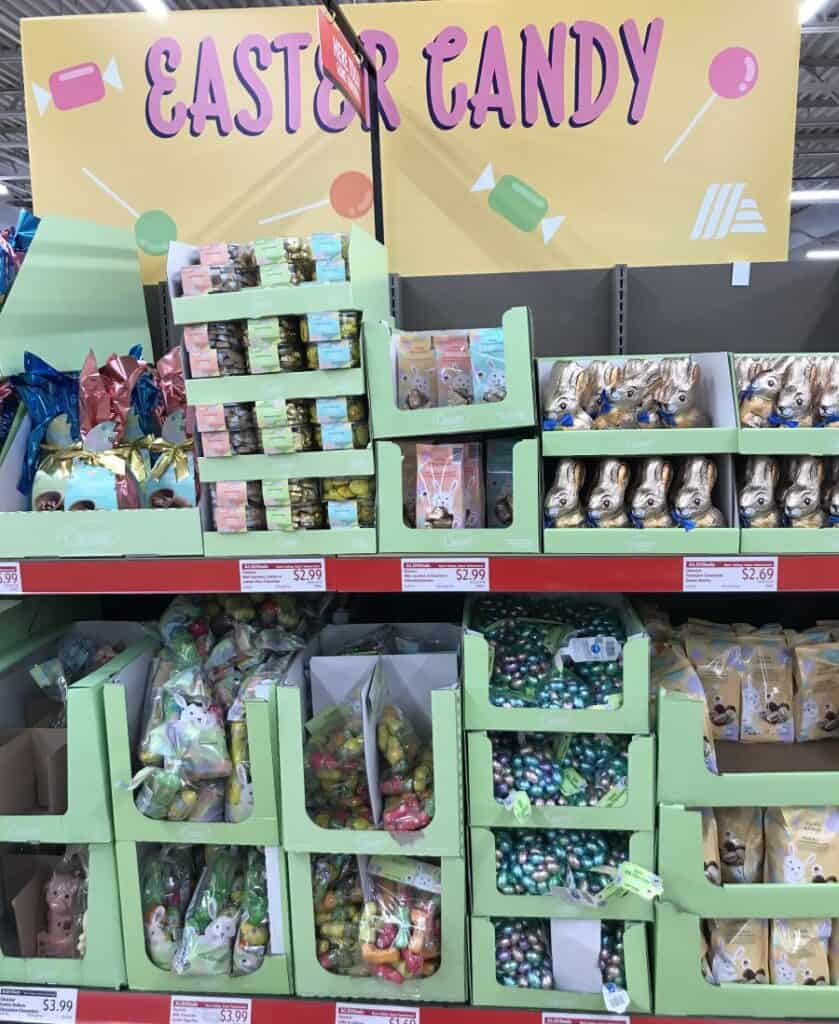When you have little ones, the holidays always seem to bring sugar overloads and piles of plastic in the form of disposable toys and trinkets. I’ve compiled some ideas for how to create healthier, more sustainable Easter baskets.
If you are trying to keep junk foods and cheap plastic toys to a minimum, you may appreciate this post.

This post contains affiliate links. At no cost to you, I may earn a small commission on qualifying purchases.
Once traditional Easter basket fillers are tossed to the side, they make their way to the landfills, and some make its way into our lakes, streams and oceans. Each year, 11 million metric tons of plastic enter our oceans on top of the estimated existing 200 million metric tons that are already there.
While it’s a huge problem, each of us can do our part to help without much inconvenience at all.
More Sustainable Easter Eggs
Let’s start with the star of the show, the eggs. Instead of plastic eggs, you can dye your own eggs with natural dyes. You’ll want to forgo most dying kits and grab some plant-based dye. If you haven’t used natural dyes before, it’s helpful to know that it takes a lot more dye than when using traditional food coloring.
Wooden eggs are a great way to avoid plastic. These authentic hollow Russian wooden eggs are pricey (rightfully so), but super cute if you are able to splurge. There are also some cute Play-Doh eggs if you have younger kiddos. Play-Doh is biodegradable, so that makes it a step above plastic. Another plastic-free option is to skip the eggs altogether.
There’s no rule that you have to use eggs!
Another option is to buy recyclable plastic eggs and use them for a very long time (most of us do this anyways, right?). Many types of plastic eggs are already recyclable but watch out for the iridescent ones or the ones with glitter or other materials added in.
Stick to the basic, plain plastic eggs, so that you can at least recycle them or pass them on one day.
More Sustainable Easter Baskets
Traditional Easter baskets are made out of all sorts of materials, but the most common are wood, manufactured wood, plastic and polyester. Natural wooden baskets are an excellent choice but are definitely not the most common. Another eco-friendly option is to make your own Easter basket from materials you have at home.

There are lots of Pinterest ideas for DIY Easter baskets. If you are into sewing, this absolutely adorable, quilted Easter basket tutorial may be for you. Reusable cloth bags also make excellent plastic-free Easter basket options.
Pass on the Plastic Grass
Just no … uhn-uh.
Plastic grass is easy for me to say not to, because it’s so messy! It’s also plastic and unnecessary IMHO. If you just have to have Easter grass, you can always grab some from your front yard—kidding, of course!
Need a filler? Pieces of craft paper, tissue paper or material scraps will work great and are all plastic free.
Ideas for Healthier Easter Baskets
Easter basket themes are a fun idea! Some ideas are a gardening theme (kid’s gardening gloves, seeds, tools), a summer theme (flip flops, beach towel, swim goggles) or a sports/hobby themed basket (whatever your child is into).
The options are endless but thinking of practical items your child actually needs is a simple way to reduce waste. Here are some healthier, more sustainable items that are just the right size for Easter baskets.
Keep in mind for certain items (flip flops, playing cards, etc.) some brands will be more sustainable than others.
Young Kids
- Finger Paints
- Fruit or Veggie Pouches
- Real Fruit Leather
- Lovey
- Bath Toys
- Lego Duplo Set
- Play-Doh/modeling clay
- Small Green Toys
- Fresh Cut Flowers

Older Kids
- Chocolate (Aldi, Trader Joe’s and Whole Foods carry festive junk-free chocolates)
- Favorite Snacks
- Legos
- Lotion/Body Butter
- Lip Balm
- Bath Bombs
- Hydro Flask
- Fun Socks
- Uno/Uno Dare
- Sports Cards
- Live Plant
Teens
- Chocolate
- Favorite Snacks
- Body Spray
- e-gift cards
- Money
- Lip Gloss
- Headbands/Hair Acessories
- Flip Flops
- Recycled Jewelry
- Playing Cards
- Natural Fiber Scarf/hat
- Phone Case
These lists are far from extensive and certainly not perfect, but most will last many years vs. many seconds. For more inspiration or sustainable brand suggestions, check out my consumable and sustainable stocking stuffer list. Most of these items will work for Easter baskets as well.
I hope this post gave you some ideas for healthier, more sustainable Easter baskets. If your kids are like mine, they’ll go on multiple Easter egg hunts, so making some sustainable swaps at home, won’t impact their experience.
Most kids grow to appreciate things that last vs. disposable things. Happy Easter!